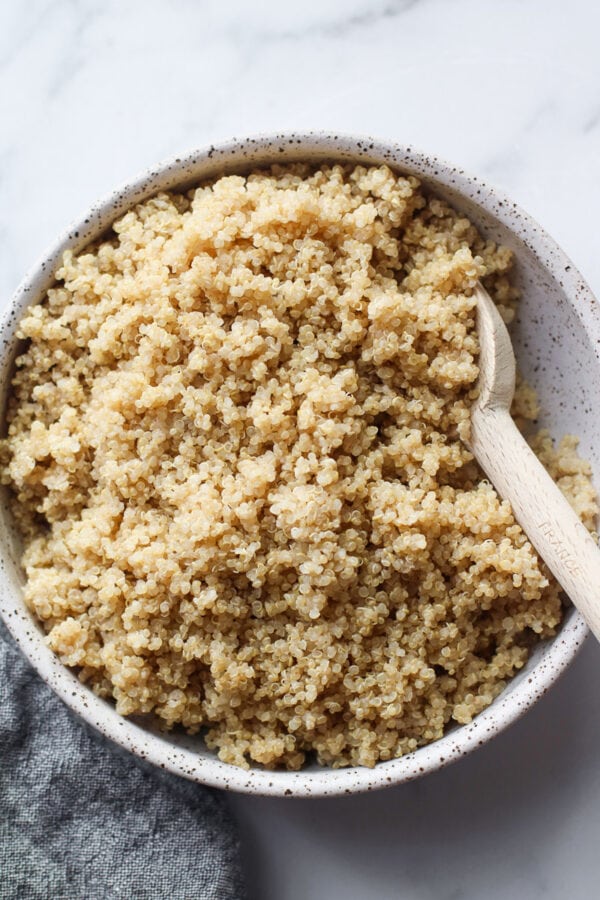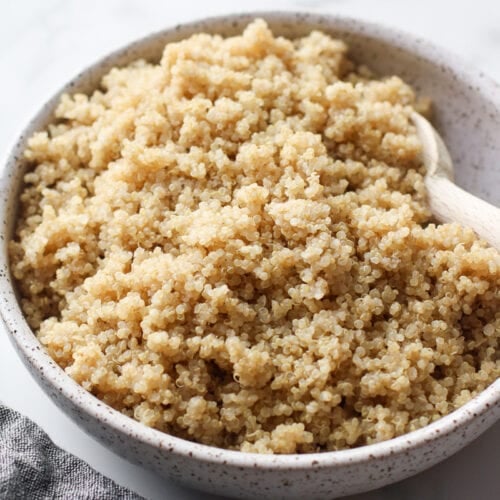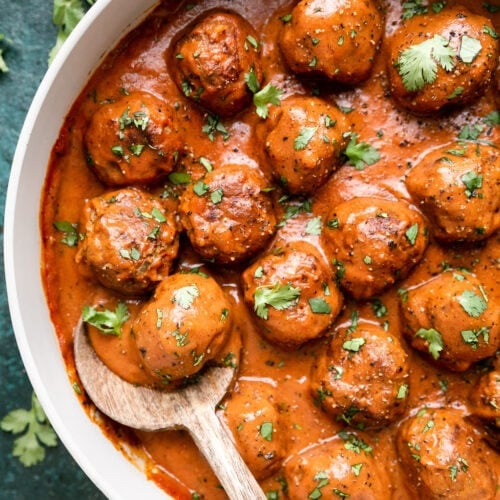In short, we love quinoa. As registered dietitians and recipe developers, we have been fans of this healthful ingredient for many years. Learn more about the special quinoa nutrition benefits and why we love to use this ingredient in many types of recipes and meal plans. You also may be wondering “What Is Quinoa?” “What Are the Benefits of Quinoa”, and “Is Quinoa Gluten Free?”. Read on to get the answers to those questions right here.
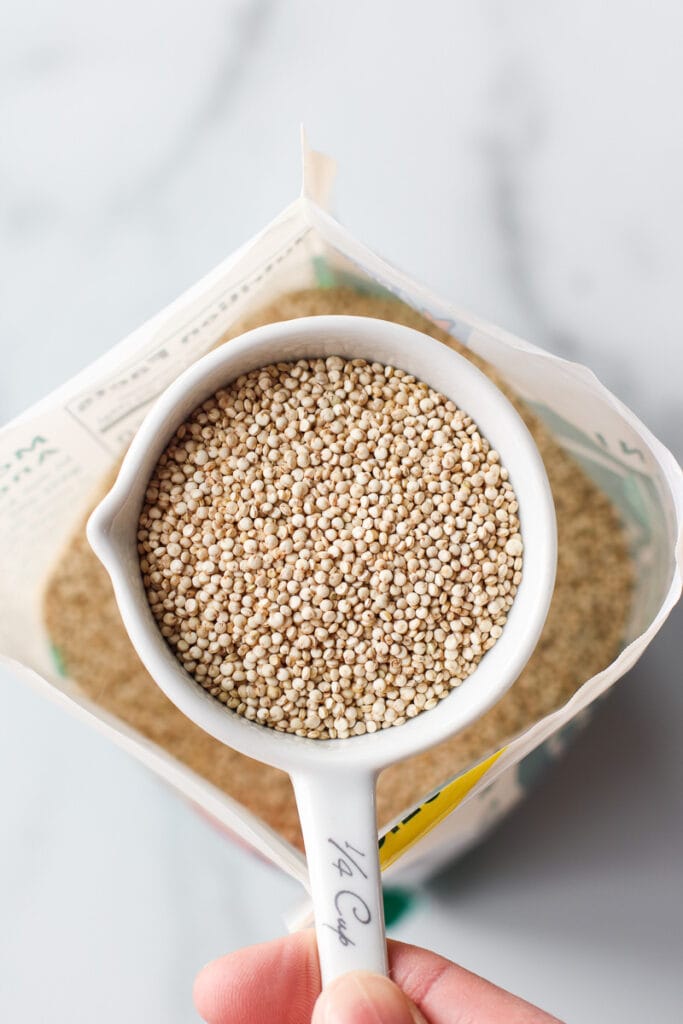
Want to save this page?
Enter your email below & we’ll send it straight to your inbox. Plus you’ll get great new recipes from us every week!
Quinoa Nutrition Benefits At A Glance
- Even though it is a plant-based food, quinoa is a complete source of protein. One cup of cooked quinoa contains 8 grams of protein
- A good source of fiber, quinoa provides 5 grams of fiber per cup
- Quinoa contains iron, calcium, manganese, magnesium, and copper
- Quinoa is naturally gluten-free
What is quinoa?
The short answer: Quinoa is a seed and a psuedocereal.
The longer answer to “What is quinoa?”: Many people consider quinoa to be a whole grain because it cooks and acts similar to other grains in recipes, such as rice and oats. But quinoa is actually a seed from a weed-like plant called goosefoot. And the plant that seed comes from is called a psuedocereal.
Pseudocereals are plants that produce seeds and fruits that are similar to grains and used in the same ways. Psedocereals are classified as being high in protein, nutrients, and vitamins, and most often they are gluten free. Other common pseudocereals include amaranth and buckwheat.
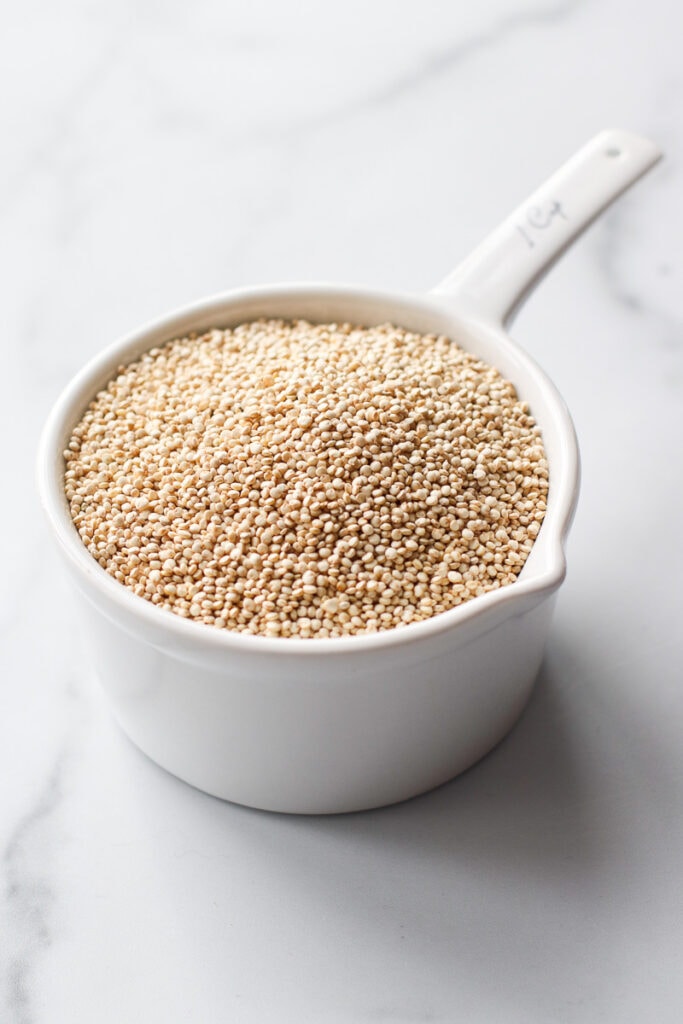
Quinoa Nutrition and The Benefits of Quinoa
The quinoa nutrition benefits make this food a great choice for adding to your healthy meals. Here’s more about why quinoa is a nutritious choice:
- Quinoa is a complete source of protein, which is rare in the world of seeds and grains. This means that quinoa contains all nine of the amino acids necessary for our nutritional needs and that our bodies don’t create fully on their own. One cup of cooked quinoa contains 8 grams of protein.
- A good source of fiber, quinoa provides 5 grams of fiber per cup.
- Quinoa is a good source of other important nutrients, including iron, calcium, manganese, magnesium, and copper.
- A very versatile ingredient, quinoa is naturally gluten-free, making it a nutritious option for people with celiac disease or a gluten intolerance.
Is Quinoa Gluten Free?
A common question we get is whether or not quinoa is gluten free. Yes, quinoa is a naturally gluten-free food. We think quinoa is a great ingredient to increase the fiber and nutrition in gluten-free recipes.
The Best Quinoa Recipes on the Internet
From quinoa salads to quinoa casseroles, this collection of healthy quinoa recipes offers many great choices for sides and main dishes that call for quinoa.
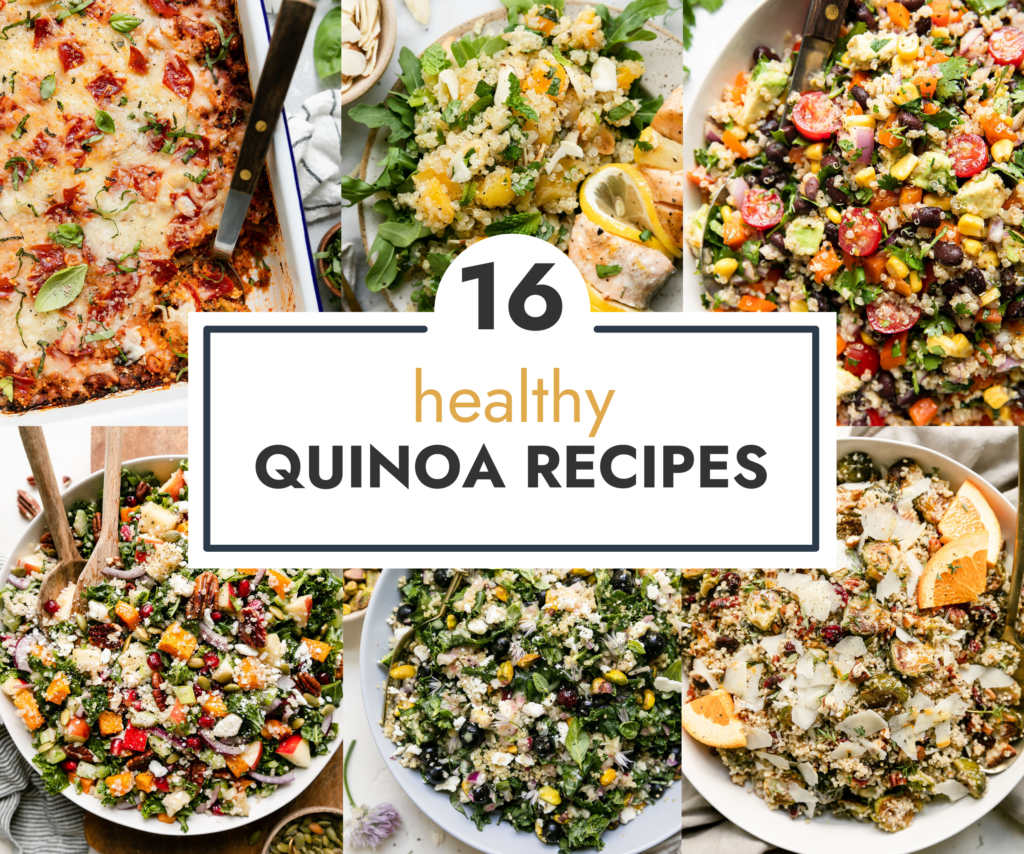
What Are The Quinoa Nutrition facts?
A 1/2-cup serving of cooked quinoa (prepared with water) contains:
- 90 calories
- 1.5 grams total fat (0.7 grams saturated fat)
- 17 grams carbohydrate (2.5 grams fiber, 0 grams sugars)
- 315 milligrams of sodium
- 4 grams of protein
- 0 milligrams of cholesterol
Frequently Asked Questions
Quinoa is a good source of plant-based protein, fiber, and minerals. Read more about quinoa nutrition benefits above.
Yes, quinoa is a naturally gluten-free food.
Check out our photo tutorial and video that shows you exactly how to cook quinoa, the easy way! Check it out here.
Rinsing dry quinoa removes the natural coating on quinoa, called saponin, which can make it taste bitter or soapy. To rinse: place the quinoa in a fine mesh strainer and run under cold water. However, if you purchase pre-rinsed quinoa, like Ancient Harvest Quinoa, the rinsing step is not necessary.
Quinoa is neither a grain nor a whole grain. Technically, quinoa is a seed and a type of food called a pseudocereal. Read more about what is quinoa above.
Pin It Now to Reference Later!
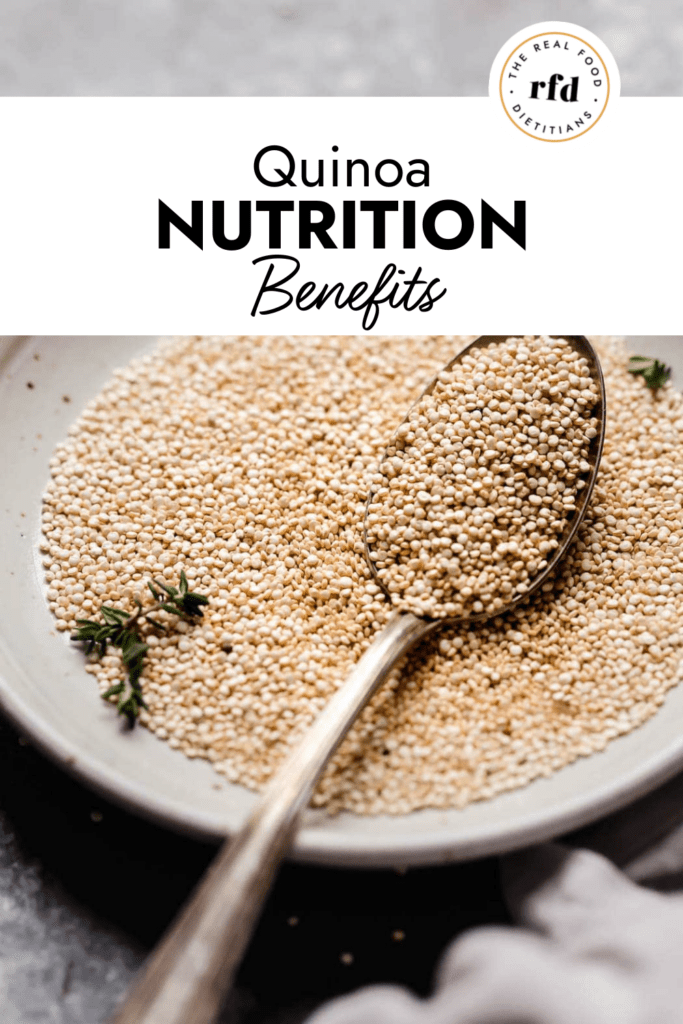
For ultimate success, we highly recommend reading the tips in the full blog post above. All photos and content are copyright protected. Please do not use our photos without prior written permission. If you wish to republish a recipe, please rewrite the recipe in your own unique words. Link back to the source recipe here on The Real Food Dietitians. Thank you!
